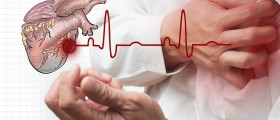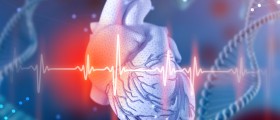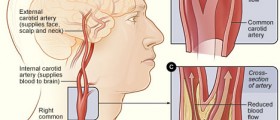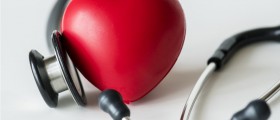
Ischemic heart disease also known as coronary heart disease is a medical condition that features with narrowing of the coronary arteries. Fatty deposits called atheroma develop inside the blood vessels that supply the heart with blood and reduce the blood flow. The final result of such narrowing is ischemia, inappropriate supply of the heart muscle with oxygen. In case the heart muscle does not receive proper amount of oxygen it can get seriously damaged. And finally, in case of complete occlusion of the affected blood vessel the person develops heart attack (myocardial infarction).
It is estimated that cardiovascular disease represents the leading cause of death in both genders in the United States. Furthermore, myocardial infarction leads to death of approximately 35% of people between the age of 35 and 50.
Clinical Characteristics of Ischemic Heart Disease
In early stages of ischemic heart disease there are no symptoms and signs. However, once the disease has progressed the person develops typical symptoms and signs of reduced blood flow through the heart. Namely, patients commonly complain about burning, squeezing sensation in the chest, heaviness or tightness in the chest. Such sensations may radiate towards the left arm, neck, jaw or shoulder blade.
In many cases the previously mentioned symptoms occur if one is exposed to increased physical activity, stress, exposure to cold air and exertion.
Risk Factors for Ischemic Heart Disease
The occurrence of ischemic heart disease is much higher if there are certain risk factors. For example, it affects more people with family history of coronary artery disease as well as those suffering from diabetes, high blood pressure, elevated cholesterol or atherosclerosis. Smoking, poor nutrition (especially diet rich in saturated fats) are two more risk factors for ischemic heart disease. And finally, obese people are more prone to ischemic heart disease than people of normal weight.
Diagnosis and Treatment for Ischemic Heart Disease
The clinical diagnosis is based on characteristic chest discomfort/ chest pain induced by exertion and relieved by rest. The condition can be further confirmed with reversible ischemic changes on EKG during the very attack. Additional tests are performed to determine the severity of ischemia and the extend of ischemic heart disease.
Patients suffering from ischemic heart disease are strictly forbidden to smoke, they must make dietary changes and bring the increased level of cholesterol and triglycerides under control. Patients are also prescribed certain medications. For example they may be given beta blockers, calcium channel antagonists or anti-platelet drugs. Nitrates are another group of medications highly effective in case of ischemic heart disease.
Surgical treatment for ischemic heart disease includes balloon angioplasty and in severe cases patients undergo bypass coronary arteries.

















Your thoughts on this
Loading...